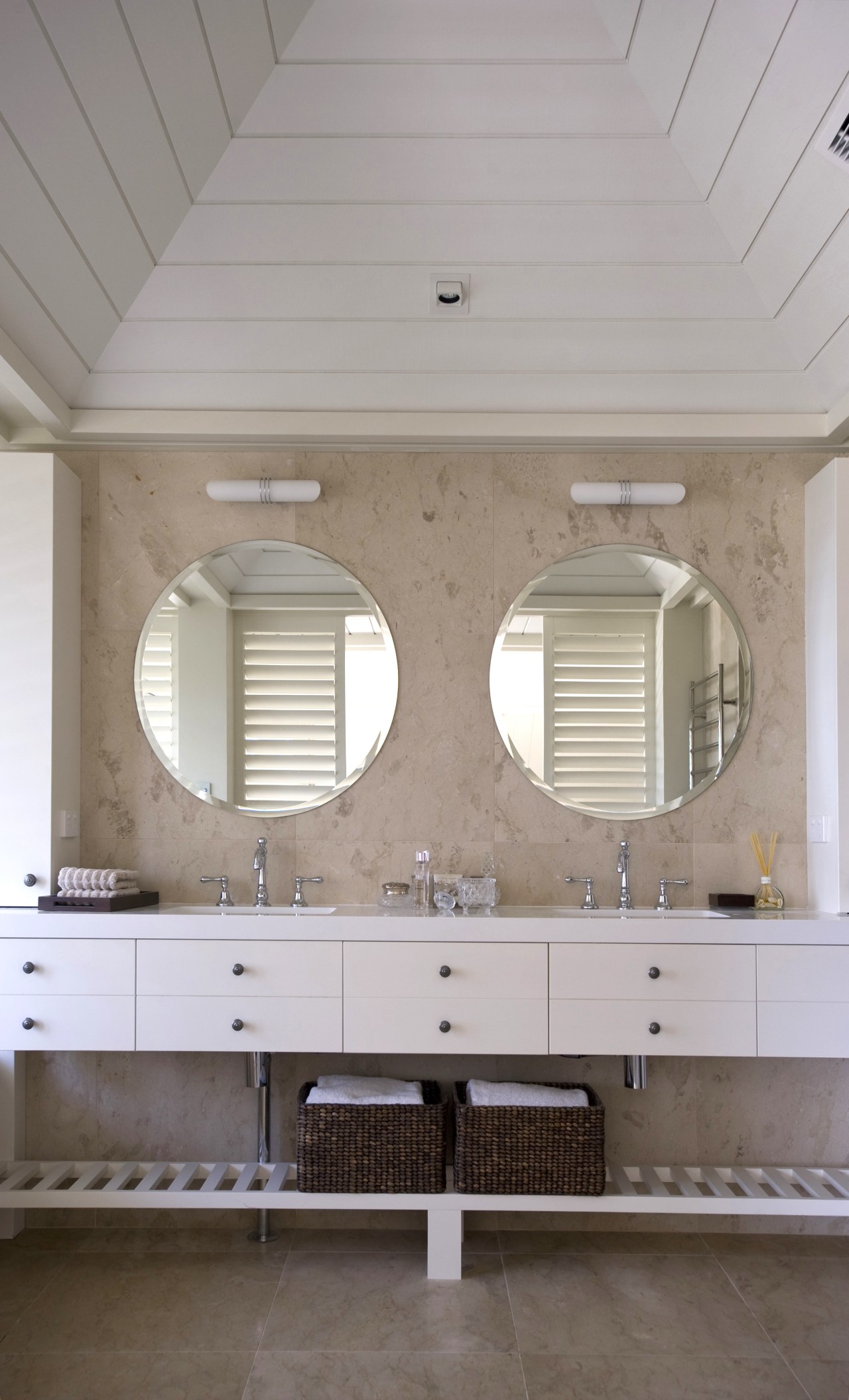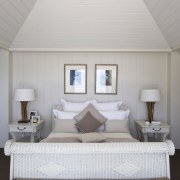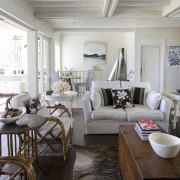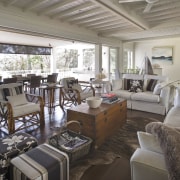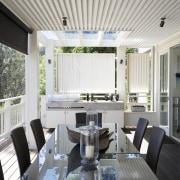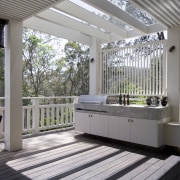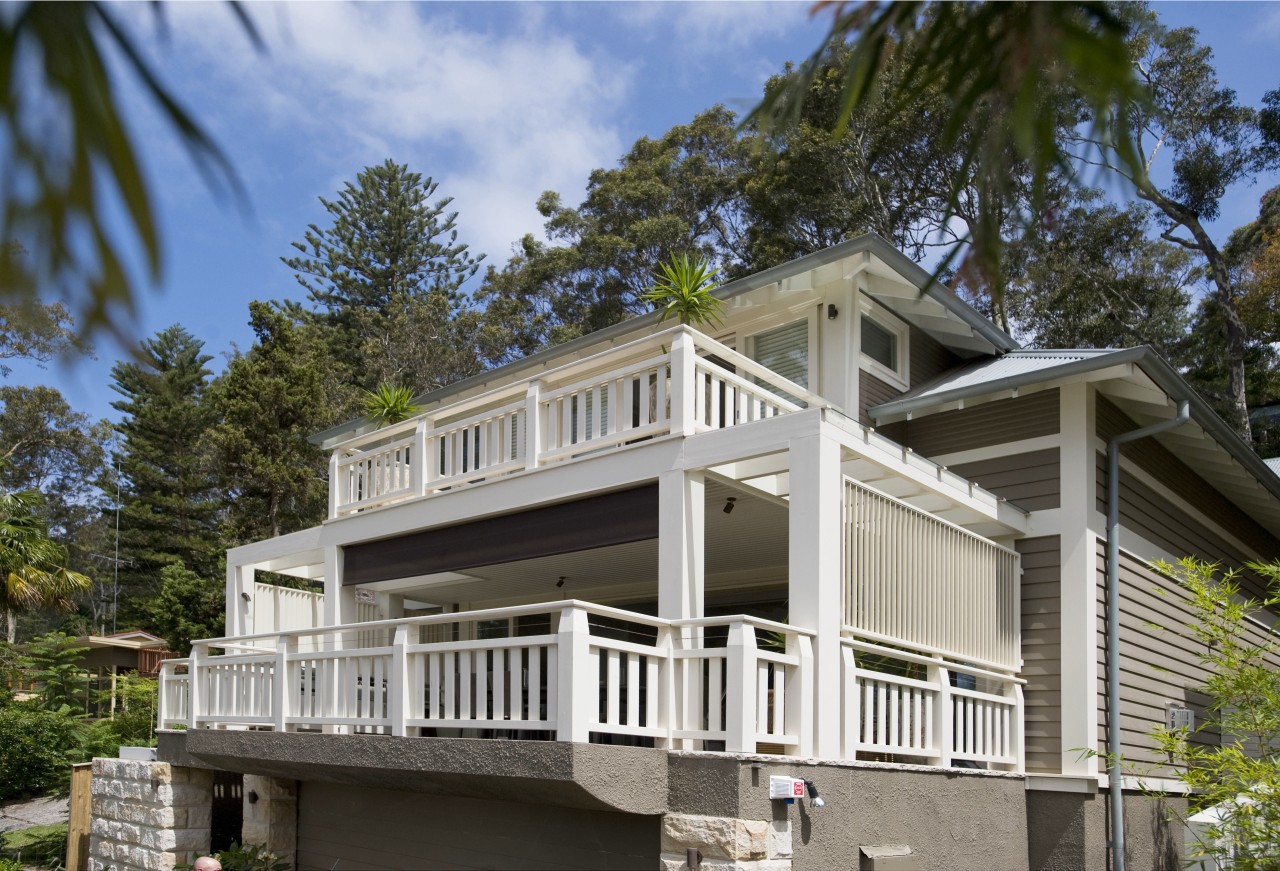Summer comes calling
From the expansive terraces to the pavilion-style architecture and painted wood interior, this cliff-top house puts a local spin on traditional American beach house architecture
Even a great view can be improved by the right architecture. This new house, on a cliff overlooking Pittwater Bay in Sydney's Northern Beaches, has been designed to frame the view, and in doing so has injected the wow factor.
Architect Walter Barda of Walter Barda Design says the resulting view is considerably more remarkable than anyone envisaged.
"The house is not a waterfront property, and there's a lot of bush around, but the design draws the view in, making it very compelling."
In designing the house, the architect says he followed the classic tradition of pavilion-style architecture, with a beach house aesthetic. And although the design was not intended to reference traditional American beach houses in the Hamptons, it does have the solid, enduring quality of such properties.
"This house needed to stand the test of time. It couldn't have a use-by date," Barda says. "It's more Australia than Hamptons, but it does have a similar solidity. There is a sense of substance and permanence in the construction this is not a flimsy building."
Barda puts this down to the structural elements, which have a generous scale. The architect also created a play of different textures on the exterior, which features roughcast rendered cement and a gradation of weatherboard profiles from traditional shiplap through to rough-sawn log-cabin boards. However, the two-tone white and tea-coloured exterior ensures the house has a crisp aesthetic.
Because the site is steep, and climbs up from the street, Barda says the owners chose to build two linked structures. As well as the main house, which comprises a basement garage and guest suite, main living level and top-floor master and guest suites, there is a separate pavilion that sits on a higher level. This provides a second living and sleeping area with its own terrace and plunge pool, and an additional bathroom.
Privacy was a key consideration in the design, and the reason Barda specified white louvred screens at the side of the main terrace.
"At the same time, we had to ensure the neighbours' views across the front of the site were protected," he says. "This was another key driver for the design."
The terrace also features white-painted timber balustrades and rails, and a timber batten ceiling. The battens extend over an area of thermal glazing, creating additional shading.
The interior repeats key themes from the outside of the house exposed, painted timber joists, boards and columns have a textural look. The walls feature Shadowclad, a New Zealand plantation-grown plywood with grooves that create the appearance of rough-sawn planks.
Not surprisingly, the main living area opens up to the terrace along the full width of the house. A series of sliding door panels can be opened to create one large indoor-outdoor room, says the architect.
The timber ceiling treatment defines key circulation areas, such as the main passage to the stairs. Similarly, the flooring changes from stone in the entry and passageways to ebonised timber throughout the living areas.
Because the house is set against a steep cliff, providing plenty of natural light was a challenge. Barda solved the problem by creating a glazed, double-height void at the rear of the house. Light floods into the kitchen though the overhead glass, which also allows a picturesque view up to a stand of spotted gum trees.
The galley-style kitchen continues the traditional feel of the house. The hand-painted cabinetry has panel doors and drawers, and is paired with Carrara marble benchtops and splashback. Glass display cabinets retain a sense of lightness.
The master suite on the top floor enhances the sense that the house is a collection of pavilions. The bed sits beneath a pyramid ceiling, and shuttered doors to the ensuite bathroom reinforce the resort look.
On the higher level, the stand-alone pavilion has a more rustic look. Barda says with its high gabled ceiling, exposed joists and beams, this building is more like a traditional beach cabin.
Story by: Trendsideas
Home kitchen bathroom commercial design
Personality plus
Diving into nature
Classic looks, contemporary efficiency
